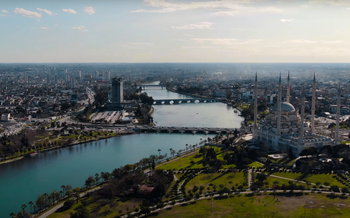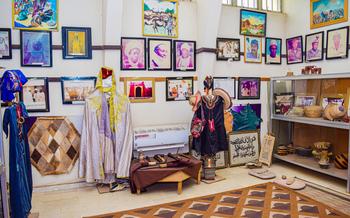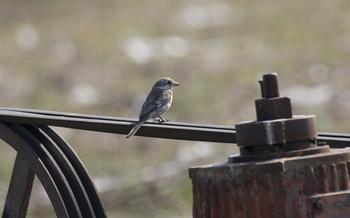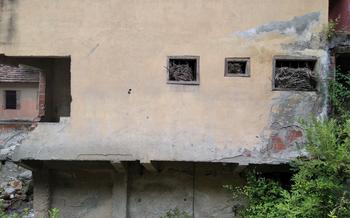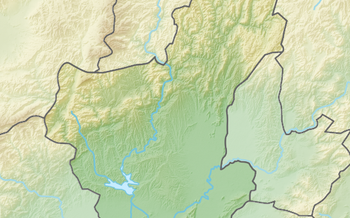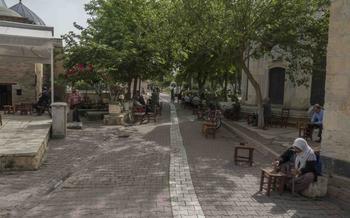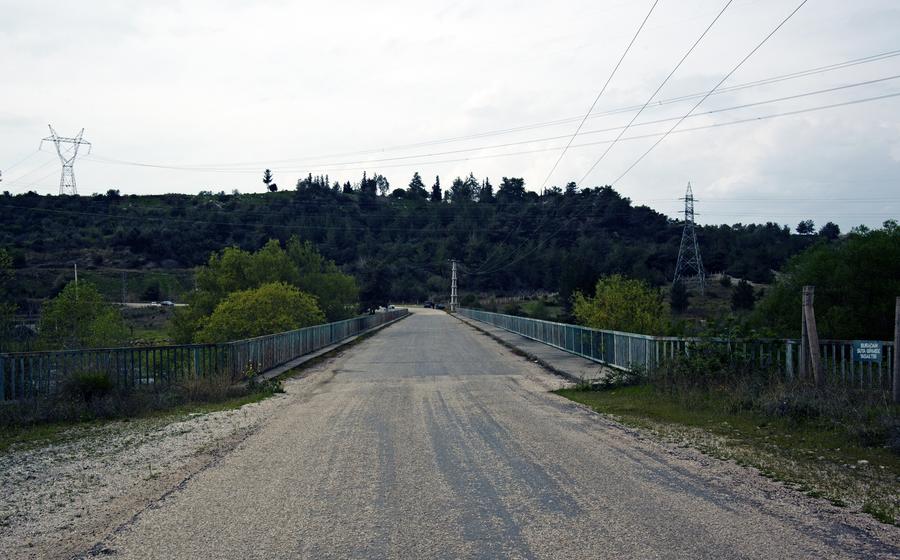
Çatalan Bridge
- Historical Significance
- Architectural Marvel
- Scenic Beauty
- Cultural Importance
- Restoration and Preservation
- Visitor Experience
- Local Cuisine
- Nearby Attractions
- Accommodation Options
- Transportation
- Safety and Precautions
- Photography Tips
- Environmental Conservation
- Insider Tip: Unveiling a Hidden Oasis
Historical Significance
Çatalan Bridge stands as a testament to the rich history and cultural heritage of Turkey. Built in the 16th century during the reign of the Ottoman Empire, the bridge was a key part of the trade and transportation network that connected the vast empire. It served as a vital gateway for caravans and merchants traveling between Anatolia and the Mediterranean coast, facilitating the exchange of goods, ideas, and cultures.
The bridge's construction was commissioned by the Ottoman sultan Süleyman the Magnificent, who was renowned for his ambitious building projects and patronage of the arts. It is believed that the bridge was designed and built by the renowned Ottoman architect Mimar Sinan, who is credited with many other iconic structures throughout the empire.
Architectural Marvel
The Çatalan Bridge, an architectural masterpiece, stands as a testament to the ingenuity and skill of its builders. Constructed using traditional methods and local materials, the bridge showcases a harmonious blend of form and function. Its unique design features include multiple arches, each gracefully supporting the weight of the structure. The arches, built using precisely cut stone blocks, create a rhythmic pattern that adds visual interest and structural stability.
The bridge's construction is a testament to the advanced engineering knowledge of its time. The builders employed innovative techniques to ensure the bridge's longevity and resilience. They used a combination of stone and brick, creating a sturdy structure capable of withstanding the test of time and the elements. The bridge's foundations, deeply embedded in the riverbed, provide a solid base that has allowed it to endure for centuries.
The Çatalan Bridge represents a fusion of architectural styles, blending elements of Roman, Byzantine, and Islamic architecture. Its arches, reminiscent of Roman aqueducts, showcase the region's rich architectural heritage. The use of domes and vaults, inspired by Byzantine architecture, adds a touch of grandeur and elegance. The intricate carvings and decorative elements, influenced by Islamic art, lend a unique charm to the bridge's overall design.
Scenic Beauty
The natural surroundings of Çatalan Bridge are as captivating as the structure itself. Set against a backdrop of lush vegetation, the bridge gracefully spans the meandering Seyhan River, creating a picturesque panorama. The river's gentle currents ripple beneath the bridge, reflecting the sunlight and adding to the serene ambiance. The banks of the river are adorned with vibrant greenery, including towering trees, fragrant flowers, and lush meadows. These elements combine to create a vibrant tapestry of colors that complements the stonework of the bridge.
As visitors stroll across the bridge, they are greeted by breathtaking views of the surrounding landscape. The bridge offers a unique perspective from which to admire the natural beauty of the region. One can gaze downriver and witness the river snaking its way through the verdant valley, flanked by rolling hills and distant mountains. Looking upstream, visitors can marvel at the bridge's imposing structure framed against the backdrop of the Taurus Mountains, their snow-capped peaks glistening in the sunlight. The panorama from the bridge is truly awe-inspiring, leaving visitors with a lasting impression of the region's natural grandeur.
One of the best spots to capture the scenic beauty of Çatalan Bridge is from the nearby hilltop. From this vantage point, visitors can take in the bridge's full majesty, set against the backdrop of the verdant valley and the meandering river. The hilltop also offers panoramic views of the surrounding countryside, allowing visitors to appreciate the region's natural splendor from a different perspective. Whether viewed from the bridge itself or from a nearby hilltop, Çatalan Bridge and its surroundings offer a feast for the eyes, inviting visitors to immerse themselves in the beauty of nature.
Cultural Importance
Çatalan Bridge holds immense cultural significance for the local community, deeply intertwined with their history, traditions, and folklore. Over the centuries, the bridge has witnessed countless events, leaving behind a rich tapestry of stories and legends. Locals consider the bridge a symbol of unity, connecting different parts of the city and bringing people together. It serves as a gathering place for celebrations, festivals, and traditional ceremonies, where the community comes together to share their joy and heritage.
Restoration and Preservation
Time and natural elements had taken their toll on Çatalan Bridge, leading to a gradual decline in its structural integrity. Recognizing its historical significance and architectural value, local authorities and conservationists initiated a comprehensive restoration project in the early 21st century. The aim was to restore the bridge to its former glory while preserving its original character and design.
The restoration process posed several challenges. Firstly, the bridge's age and delicate condition required meticulous care and expertise. Secondly, sourcing authentic materials and employing traditional construction techniques was essential to maintain the bridge's historical authenticity. Despite these challenges, the restoration team worked diligently to repair damaged stones, reinforce the bridge's foundations, and restore its intricate carvings.
The successful restoration of Çatalan Bridge stands as a testament to the commitment of the local community and conservationists to preserving their cultural heritage. Today, the bridge remains a symbol of Adana's rich history and continues to attract visitors from around the world who appreciate its architectural beauty and historical significance.
Ongoing maintenance work is carried out regularly to ensure the bridge's longevity and protect it from further deterioration. This includes routine inspections, cleaning, and minor repairs as needed. By preserving Çatalan Bridge, future generations can continue to marvel at this architectural masterpiece and appreciate its role in the region's history and culture.
Visitor Experience
Whether you're a history buff, a nature enthusiast, or simply a curious traveler, Çatalan Bridge offers a rewarding experience for all. To make the most of your visit, plan your trip during the spring or fall when the weather is pleasant and crowds are smaller.
Upon arrival, take some time to explore the bridge from various angles. Walk across the bridge to appreciate its architectural details and soak in the stunning views of the river and the surrounding landscape. Don't forget to capture some memorable shots with your camera.
After admiring the bridge, consider packing a picnic lunch and finding a spot along the riverbank to enjoy a leisurely meal while savoring the tranquil atmosphere. If you're feeling adventurous, bring your swimsuit and take a refreshing dip in the river's cool waters. Alternatively, cast a line and try your luck at fishing.
For those interested in learning more about the bridge's history, guided tours are available upon request. These tours provide fascinating insights into the construction, significance, and cultural importance of Çatalan Bridge.
Please note that there are no entrance fees or permits required to visit the bridge. However, parking is limited, so it's advisable to arrive early or consider using public transportation.
Local Cuisine
Adana is renowned for its rich and flavorful cuisine, which has been influenced by various cultures throughout history. To fully immerse yourself in the local culinary experience, be sure to sample some of the traditional dishes that Adana is famous for.
Adana Kebab: This is a must-try dish for any visitor to Adana. Prepared with minced lamb or beef seasoned with spices and grilled on skewers, the kebab is served with grilled vegetables and flatbread.
Çiğ Köfte: A vegetarian delight, çiğ köfte is a spicy mixture of bulgur, vegetables, and spices. It is often served with fresh vegetables and bread.
Şırdan: This unique dish is made from lamb intestines stuffed with rice, spices, and herbs. It is typically grilled or fried and served with lemon wedges.
These are just a few of the many culinary delights that Adana has to offer. To savor the authentic flavors of Adana cuisine, head to one of the local restaurants or food stalls near Çatalan Bridge. Enjoy the vibrant atmosphere and indulge in the delicious dishes that have made Adana a culinary paradise.
Nearby Attractions
Just a stone's throw from Çatalan Bridge, history buffs can delve into the past at the Adana Museum, where captivating exhibits showcase the region's rich cultural heritage. Immerse yourself in the awe-inspiring grandeur of the Great Mosque of Adana, a testament to the city's architectural prowess. Nature enthusiasts will revel in the serene beauty of Seyhan Dam Lake, where tranquil waters offer a picturesque backdrop for leisurely strolls or invigorating boat rides. For a unique glimpse into local life, wander through the vibrant alleys of the Old Bazaar, where colorful stalls overflow with an array of traditional handicrafts, spices, and delectable treats.
Accommodation Options
Whether you're seeking a luxurious retreat or a budget-friendly stay, Adana offers a diverse range of accommodation options to suit every traveler's needs and preferences.
-
Luxury Hotels: Indulge in opulence at five-star hotels such as the Divan Adana or the Sheraton Grand Adana. These establishments offer world-class amenities, including spacious rooms, fine dining restaurants, and rejuvenating spas.
-
Boutique Hotels: For a more intimate and personalized experience, consider staying at a charming boutique hotel. The Adana Oteli and the Antik Otel are popular choices, offering unique décor, personalized service, and a warm ambiance.
-
Guesthouses: For a budget-friendly option, guesthouses provide a comfortable and authentic stay. The Adana Pension and the Çatalan Pension offer clean and cozy rooms, often with shared facilities, at affordable rates.
-
Homestays: Immerse yourself in local culture by staying with a local family. Homestays offer a unique opportunity to learn about Adana's traditions and daily life while enjoying home-cooked meals and warm hospitality.
When choosing a place to stay, consider factors such as location, amenities, and budget. Many hotels and guesthouses are conveniently situated near Çatalan Bridge, allowing for easy access to this historical landmark.
To secure your accommodation, it's advisable to book in advance, especially during peak tourist seasons. Online booking platforms and local travel agents can assist with reservations and provide information on availability and rates.
Transportation
Reaching Çatalan Bridge is straightforward, with several transportation options available. The nearest airport is Adana Şakirpaşa Airport (ADA), located about 60 kilometers from the bridge. From the airport, you can take a taxi or rent a car to drive to the bridge. The journey by car takes approximately one hour.
Alternatively, you can take a train to Adana Railway Station from major cities in Turkey. From the train station, you can take a local bus or taxi to Çatalan Bridge. The bus journey takes about 30 minutes, while the taxi ride takes approximately 20 minutes.
If you prefer to travel by bus, several bus companies offer direct services to Adana from various cities across the country. From the Adana bus terminal, you can take a local bus or taxi to the bridge.
Once you arrive in the vicinity of the bridge, there is ample parking space available for visitors. Parking is free of charge, and there are no restrictions on parking duration.
When planning your transportation, consider the time of day and expected traffic conditions. Weekends and holidays tend to be busier, so it's advisable to avoid these times if you prefer a quieter experience.
Safety and Precautions
When exploring Çatalan Bridge and its surroundings, visitors should take the necessary precautions to ensure their safety and well-being. The area is generally safe for tourists, but it's always wise to be aware of potential risks and challenges. Here are some safety tips to keep in mind:
- Be cautious when walking on or near the bridge, as the ancient structure may have uneven surfaces or loose stones.
- Avoid swimming or fishing in the river near the bridge, as the currents can be strong and unpredictable.
- Respect local customs and traditions, and dress modestly when visiting religious or cultural sites.
- Be aware of petty theft, especially in crowded areas, and keep your belongings close.
- If hiking or exploring the surrounding countryside, let someone know your itinerary and expected return time.
- Drink plenty of water and protect yourself from the sun, especially during hot summer months.
- If you encounter any problems or emergencies, contact the local authorities or seek assistance from your hotel or tour guide.
Photography Tips
To capture the beauty of Çatalan Bridge and its surroundings, consider the following photography tips:
Best Lighting: Aim to visit during the golden hours of sunrise or sunset to capture the bridge bathed in warm, diffused light.
Angles and Perspectives: Experiment with different angles and perspectives. Shoot from the riverbank, the bridge itself, or from higher vantage points for panoramic views.
Creative Compositions: Play with compositions by incorporating elements like reflections in the water, silhouettes against the sky, or people interacting with the bridge.
Filters and Lenses: Use polarizing filters to reduce glare and enhance colors. Wide-angle lenses can capture the bridge's grandeur, while telephoto lenses can isolate details.
Tripods and Shutter Speed: Use a tripod for stability, especially for long exposure shots that blur the flowing water or capture light trails from passing vehicles.
Environmental Conservation
Çatalan Bridge stands as a testament to the harmonious coexistence between human creation and the natural world. As visitors marvel at its architectural grandeur, it is essential to recognize the importance of preserving the delicate ecosystem that surrounds it. The local community has taken commendable steps to protect and conserve the bridge's natural surroundings. Visitors are encouraged to embrace responsible tourism practices to minimize their environmental impact. Simple actions like reducing plastic waste, respecting wildlife, and avoiding littering go a long way in preserving the pristine beauty of the area. Supporting local conservation efforts, such as tree planting initiatives or wildlife protection programs, further contributes to the long-term sustainability of the environment. By working together, we can ensure that future generations continue to enjoy the breathtaking scenery and rich biodiversity that define Çatalan Bridge and its surroundings.
Insider Tip: Unveiling a Hidden Oasis
Beyond the well-trodden tourist paths, a secret paradise awaits discovery near Çatalan Bridge. Nestled amidst lush greenery and tumbling waterfalls, this hidden gem offers a tranquil escape from the bustling city.
To reach this oasis, follow the winding path that leads away from the bridge and into the heart of the surrounding forest. As you venture deeper, the sounds of civilization fade away, replaced by the gentle murmur of the river and the melodious songs of birds.
Emerging from the foliage, you will be greeted by a breathtaking sight. A crystal-clear pool, fed by cascading waterfalls, invites you to take a refreshing dip and bask in the tranquility of nature. Surrounded by towering trees and vibrant wildflowers, this hidden gem is a photographer's dream, offering endless opportunities to capture the beauty of the natural world.
Whether you choose to relax by the pool, immerse yourself in the invigorating waterfalls, or simply soak in the serenity of the surroundings, this hidden oasis promises an unforgettable experience. Embrace the spirit of adventure, venture beyond the ordinary, and discover the magic that awaits just a short distance from Çatalan Bridge.
